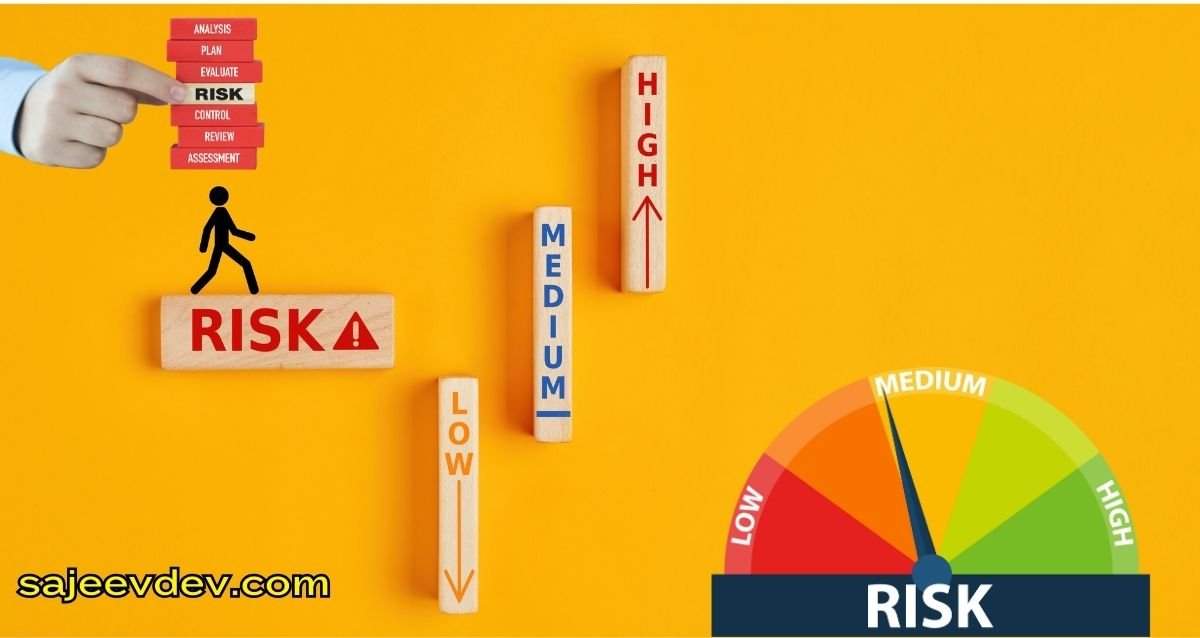The Fear of Failure
Fear of failure is a deeply ingrained emotion that many individuals experience at different stages in their lives. This fear can stem from various sources, including cultural norms, personal experiences, and societal perceptions. In numerous cultures, success is often celebrated while failure is stigmatized. This dichotomy creates a perception that failure is something to be avoided at all costs, rather than seen as a natural part of the learning process. Such societal attitudes can drive individuals to shun risks and opportunities for fear of falling short of expectations.
The psychological impact of this fear is profound. When individuals harbor a fear of failure, it can lead to anxiety, procrastination, and a reluctance to step outside of their comfort zones. This fear often manifests as self-doubt and can paralyze decision-making processes. When facing challenges, people may prioritize the need for safety and security over the prospect of growth and achievement. Consequently, they may overlook valuable opportunities that could lead to personal and professional development.
Furthermore, this fear can inhibit creativity and innovation. In environments where failure is frowned upon, individuals may become overly cautious, choosing to adhere to established practices rather than exploring novel approaches. This avoidance of risk can stifle progress, ultimately limiting personal potential and hindering organizational growth. It is crucial to understand that failure is not an endpoint, but rather a stepping stone toward eventual success.
Addressing and overcoming the fear of failure is vital for growth. It encourages resilience, fosters adaptability, and cultivates a mindset geared toward improvement. By redefining failure as an opportunity for learning rather than a setback, individuals can embrace risks that lead to a more fulfilling and productive life. Taking calculated risks can ultimately result in significant personal and professional growth, enabling individuals to reach their full potential.
The Stagnation of Staying in the Same Place
Remaining within a comfort zone may initially seem appealing; however, it often leads to stagnation. When individuals or organizations prioritize safety and familiarity over risk-taking, they may inadvertently hinder personal and professional development. This phenomenon can manifest as a lack of progress, resulting in missed opportunities for growth and innovation.
Complacency tends to breed routines that limit exploration and creativity. For instance, employees may find that by shying away from challenging projects, they limit their skill sets and prevent themselves from rising in their careers. A survey by the American Psychological Association indicated that over 70% of employees expressed feelings of stagnation due to a lack of new projects, reinforcing the idea that comfort zones can detract from job satisfaction and fulfillment.
Moreover, this stagnation can lead to regret. Individuals who consistently opt for the familiar often find themselves looking back on their lives with a sense of ‘what if.’ They might yearn for the experiences they could have had or the skills they could have acquired had they embraced the unknown. A poignant example is that of individuals who stay in unfulfilling careers out of fear of change; research has shown that people often wish they had taken more risks when reflecting on their past once they reach later stages in life. The term ‘analysis paralysis’ encapsulates this state, where excessive overthinking leads to inaction.
Ultimately, the consequences of remaining stagnant include not only professional limitations but also a profound sense of unfulfillment. By avoiding risks, individuals miss critical opportunities for personal growth and the chance to pursue new passions. It is essential for both individual and collective advancement to recognize that risk-taking is an integral part of developing resilience, adaptability, and a fulfilling life.
Redefining Failure: A Path to Learning
In contemporary society, failure is often perceived negatively, associated with disappointment and embarrassment. However, by redefining failure as a valuable learning opportunity, we can shift our perspective and embrace the inherent potential for growth within each setback. This approach fosters resilience and adaptability, skills essential for navigating life’s challenges.
Failure provides a unique opportunity for introspection and assessment. When individuals encounter obstacles, they are prompted to analyze their decisions, strategies, and attitudes. This reflection can lead to the identification of areas for improvement and the development of new skills. For instance, Thomas Edison famously remarked, “I have not failed. I’ve just found 10,000 ways that won’t work,” highlighting his belief that every misstep is a step toward eventual success. Edison’s numerous experiments with the electric light bulb were not failures but critical learning experiences that contributed to his eventual breakthrough.
Many successful entrepreneurs also exemplify the importance of embracing failure as a pivotal component of their journeys. J.K. Rowling, the author of the Harry Potter series, faced multiple rejections before finding a publisher willing to take a chance on her work. Instead of succumbing to defeat, she used these experiences to refine her writing and strengthen her resolve, ultimately resulting in one of the most beloved literary franchises worldwide. Her story exemplifies how perceived failures can serve as foundational lessons, propelling individuals toward their goals and enhancing their ability to persevere.
Rethinking failure in this way encourages individuals to take risks without the paralyzing fear of consequences. Engaging with challenges, understanding that setbacks are integral to the learning process, fosters a culture of growth and innovation. Ultimately, by reframing our understanding of failure, we can cultivate a mindset that embraces risks, viewing them as stepping stones to success rather than obstacles to avoid.
The Role of Risk in Personal Development
Taking risks is an intrinsic part of personal development. Engaging in calculated risks allows individuals to push their boundaries and explore new possibilities that contribute significantly to their growth. Often, maintaining a comfort zone can lead to stagnation; once we become too comfortable, the opportunities for learning and advancement decrease. By stepping outside of this zone, we can gain new experiences that foster both skill enhancement and confidence.
Many aspects of personal development are inherently tied to the willingness to embrace uncertainty. For instance, learning new skills often requires venturing into unfamiliar territory where the outcomes are not guaranteed. This willingness to take risks can lead to acquiring diverse skills and perspectives, enriching one’s personal and professional life. In situations where individuals decide to engage in risk-taking behaviors, they may find themselves overcoming challenges that further refine their abilities.
Moreover, taking risks contributes positively to overall life satisfaction. Successfully navigating through challenging situations bolsters self-esteem and instills a sense of accomplishment. Even in cases where the outcome is less than favorable, valuable lessons can be gained that encourage resilience and adaptability. Importantly, embracing risk can also strengthen a person’s ability to face future challenges with more confidence.
Ultimately, the role of risk in personal development should not be underestimated. Taking calculated risks leads to skill enhancement, increased confidence, and greater satisfaction in life. It allows individuals to expand their horizons and pursue growth in various dimensions of their lives, ensuring continuous evolution and improvement. This journey through risk not only enriches personal experiences but also prepares individuals to tackle complexities with a more robust approach to the challenges that lie ahead.
Setting Goals to Encourage Risk-Taking
Goal setting is a fundamental aspect of personal and professional development, especially when it comes to fostering a mindset conducive to risk-taking. Establishing realistic and achievable goals can significantly diminish the fear of failure, which often paralyzes individuals when considering new ventures. A structured approach to goal setting involves defining clear objectives that inspire action while simultaneously mitigating anxiety around the potential outcomes.
To begin, it is essential to employ the SMART criteria: Specific, Measurable, Achievable, Relevant, and Time-bound. By formulating goals within this framework, individuals can concentrate efforts on precise targets. For instance, instead of vaguely aiming to “get better at networking,” one might set a goal to connect with at least three new professionals in their field each month. This specificity not only clarifies the aim but also makes it more manageable, thereby reducing the intimidation of taking the initial steps.
Moreover, it is prudent to embrace incremental goals. These are smaller, successive accomplishments that lead toward a larger objective. By breaking a significant ambition into smaller tasks, individuals can experience regular feelings of achievement, which bolster confidence. This gradual reinforcement encourages a proactive approach to risks, as each positive outcome can lessen the overall fear of failure. For example, if someone’s ultimate goal is to launch a startup, they might start with researching the market or developing a business plan as initial milestones.
Additionally, reflecting on past experiences can illuminate strengths and areas for improvement. Understanding how previous efforts, whether they resulted in success or failure, contributed to personal growth can reshape perceptions of risk. Viewing failures as learning opportunities lays the foundation for a resilient mindset necessary for undertaking new challenges. Thus, through targeted goal setting, individuals can cultivate an environment where risk-taking is not only accepted but celebrated as an essential part of personal development.
Building a Support System
Creating a robust support system is integral to personal and professional growth, especially when it comes to taking risks and confronting the fear of failure. A network composed of friends, family, and mentors can significantly influence one’s confidence and willingness to step outside of their comfort zone. These relationships provide the necessary encouragement and reinforcement that individuals need when considering pursuing new endeavors or making significant life changes.
Friends and family often serve as the first line of support. Their unconditional love and belief in one’s abilities can foster a sense of security that emboldens individuals to take risks they might otherwise shy away from. These personal connections allow for open discussions about fears and aspirations, creating a safe space where one can express doubts and receive constructive feedback. Over time, this encouragement can play a vital role in diminishing the impact of negative thoughts related to failure.
In addition to personal relationships, mentors play a crucial role in shaping an individual’s willingness to take risks. These seasoned professionals offer insights drawn from their own experiences, often highlighting the value of failure as a learning opportunity. A mentor’s perspective can be especially reassuring, offering practical advice on navigating challenges. Knowing that someone has traversed a similar path can alleviate the anxiety associated with taking risks, making the journey less daunting.
Moreover, a supportive community fosters a culture of resilience, where individuals understand that setbacks are not only expected but are also valuable components of the growth process. This mindset enables individuals to approach risks with a sense of openness rather than fear. Ultimately, a well-established support system not only enhances confidence and reduces the fear of failure but also encourages individuals to undertake challenges that propel them toward their goals.
Success Stories: Learning from Those Who Took Risks
Throughout history, numerous individuals have taken substantial risks, leading them to remarkable success. Their stories serve as powerful reminders of the importance of stepping outside of one’s comfort zone. One such notable figure is J.K. Rowling, the acclaimed author of the Harry Potter series. Before her immense success, Rowling faced significant personal struggles, including financial instability and the challenges of single parenthood. Despite receiving numerous rejections from publishers, she persevered with her vision, ultimately transforming the literary landscape and inspiring millions of readers worldwide.
Similarly, Howard Schultz, the former CEO of Starbucks, illustrates the impact of calculated risk-taking. Raised in a poor neighborhood, Schultz had a vision to create a third place between work and home for people. His first proposal to turn Starbucks into a café chain was met with skepticism. However, Schultz took the risk to purchase the company and redefined its mission, leading Starbucks to become a global brand synonymous with coffee culture and community gathering spaces. His journey demonstrates how embracing the unknown can yield extraordinary outcomes.
Another prominent example is Sara Blakely, the founder of Spanx. Blakely faced numerous obstacles in her entrepreneurial journey, including limited resources and lack of industry experience. Despite feeling intimidated in a male-dominated field, she took the leap to launch her innovative shapewear brand. Her persistence and belief in her product led Spanx to become a billion-dollar company, showcasing how taking risks can pave the way for groundbreaking success.
These success stories highlight that fear of failure can often be a barrier to greatness. By examining the journeys of individuals like J.K. Rowling, Howard Schultz, and Sara Blakely, we can recognize the tangible rewards that come from taking calculated risks. Their testimonials inspire us to embrace our fears and consider that extraordinary achievements often lie just beyond our limits.
Practical Tips for Overcoming Fear
Overcoming the fear of failure is a crucial step for personal and professional growth. Implementing effective strategies can enable individuals to manage their anxieties and embrace risk-taking as a pathway to success. One powerful technique is visualization. By envisioning successful outcomes in risk-taking scenarios, individuals can create a mental image that counteracts their fears. This practice not only builds confidence but also helps in reducing anxiety associated with taking risks.
Another effective strategy is positive self-talk. The internal dialogue we maintain can significantly influence our mindset. Replacing negative thoughts with affirmative statements can shift one’s perspective on fear and failure. For instance, reframing “What if I fail?” to “What if this leads to new opportunities?” encourages a more constructive outlook. This shift in focus cultivates resilience and a greater willingness to step outside of one’s comfort zone.
Gradual exposure is also an essential strategy for managing fear. By gradually encountering risk-taking situations, individuals can acclimate themselves to discomfort and learn to respond more positively to it. Setting small, achievable goals that involve some level of risk enables individuals to build their confidence incrementally. Over time, this process can desensitize one’s fear response, making it easier to face larger challenges.
Additionally, seeking support from peers or mentors can provide further encouragement. Sharing experiences and challenges with others can foster a sense of belonging and diminish feelings of isolation that often accompany fear of failure. Embracing a supportive community encourages accountability and motivates individuals to pursue their goals despite potential setbacks. By utilizing these techniques—visualization, positive self-talk, gradual exposure, and community support—individuals can effectively manage their fear of failure and pave their path toward growth.
The Path to Growth: Making a Commitment
Embracing a growth-oriented mindset is a critical component for personal and professional development. This commitment involves recognizing that growth is often hindered by fear and complacency. To foster an environment where risk-taking is valued, individuals must first evaluate their current situation. A thorough self-assessment allows one to identify existing comfort zones that may be stagnating personal progress. Are you holding back due to fear of failure? Understanding the nuances of this intimidation is essential in moving forward.
Once you have reflected on your circumstances, the next step is to acknowledge your willingness to step beyond comfort zones. This requires a conscious decision to face uncertainties and challenges. The path to growth often involves taking calculated risks, which can lead to valuable learning experiences. It is important to view failures not as setbacks but as opportunities for enhancement. By shifting your perspective from avoiding mistakes to recognizing them as vital components of the learning journey, you can cultivate a growth-centric approach to challenges.
To effectively foster growth over the coming year, consider outlining actionable steps that align with your goals. Setting specific, measurable objectives can help guide you in making tangible progress. For example, dedicate a portion of your time each week to explore new skills or seek feedback from peers, allowing for both personal reflection and external insight. Additionally, foster a network of support that encourages open dialogue about fears and aspirations. This collaborative approach can provide the necessary motivation and accountability to help you stay committed to your growth journey.
By embracing this mindset and making a firm commitment to risk-taking, you pave the way for significant personal and professional advancement. Remember, growth often lies just outside the confines of comfort.









